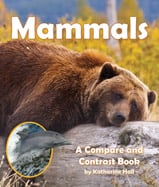Alignment to Standards for VT

| Grade | Number | Standard |
|---|---|---|
| 1,2 | S 1-2:6 | Sorting and classifying objects based upon observations, prior knowledge, or experience and justifying groupings. |
| 1,2 | S1-2:30 | the parts that make up living things (i.e., roots, stems, leaves, flowers, legs, antennae, tail, shell). |
| 1,2 | S1-2:30a. | Living things (plants and animals) are made of parts that enable survival. |
| 1,2 | S1-2:40 | comparing their physical features with those of other organisms. |
| 2,3 | S3-4:36 | Explaining how one organism depends upon another organism to survive. |
| 2,3 | S3-4:36a. | Organisms interact with one another in various ways besides providing food Many plants depend on animals for carrying their pollen to other plants for fertilizing their flowers). |
| 2,3 | S3-4:38 | Describing and sorting plants and animals into groups based on structural similarities and differences (e.g., All pine, spruce and evergreen trees have similar leaf structures; Spiders have eight legs, and insects have six). |
| 2,3 | S3-4:38a. | The great variety of living things can be sorted into groups in many ways using various characteristics to decide which things belong to which group. |
| 2,3 | S3-4:5a | Classifying objects and phenomena into sets and subsets and justifying groupings. |
| PK-K | H&SSPK-K:5b | Analyzing evidence (e.g., sorting objects, justifying groupings, role playing). |
| PK-K | SPK-K:38 | Sorting and identifying examples of plants and animals. |
| PK-K | SPK-K:38a. | Some living things (organisms) are identified as plants or animals. |
| PK-K | SPK-K:9b | Objects can be sorted according to their properties. |